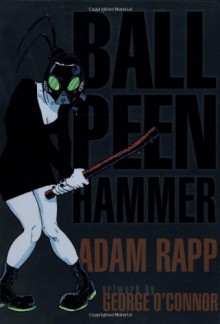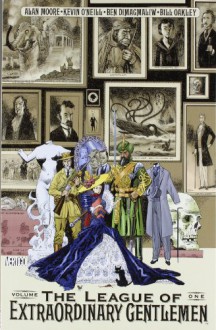
Y'know - people who don't do horror sure have no idea on how to react to things that are from the genre. It's all tawdry, it's irredeemable, it's as bad as Grand Theft Auto. Not that there's anything wrong with that type of fun stuff - I grew up playing Vice City because I had cool parents. I am not a fan of Troma, personally, but I get it - I have to stop myself from cheering while I'm watching Hellraiser because of the sheer mixture of the holy/the utterly desecrated and the contrast between purity - and a whole lot of fucking blood and gore.
But when something isn't PURE psychological and uses body horror to get its point across, you're bound to lose the dumber sectors of the anti-horror brigade. I have a problem with this mindset, mainly because as a writer, I understand that the use of such visceral imagery can sometimes be used to the most amazing effect -

- and that is typically when the body horror says something about the less readily visible aspects of a person - their morality, their sins, ect, ect. This is even used to talk about the mores and the societal rules of a deomographic of people. Torture porn is something altogether different.
Now, why am I talking about body horror.gore before I talk about this, a graphic novel that breaks away from my streak of kids' books? Heheheh.
.jpg)
Ball Peen Hammer - Adam Rapp, George O'Connor 2009
Do I Own This?: Hell Yes!
Spoiler Free Portion
This story is a plague dystopia that takes place a good while after the shit has hit the fan so hard that people's morality has become shrunken to fit just around their own safety. The resistance has been crushed; the only hope (a vaccine) now lies, at least for these characters, just beyond the crushing boundary of a mysterious group that keeps people trapped inside and doing awful things for some unexplained reason.
Our four main characters are paired into two groups, one that are in this basement room where things in bags make the room smell godawful and the other are in a clocktower whose clock broke when "the bombs fell". The person who maintained the clock is dead in the other, locked room.
The only thing to do appears to talk, to share - to share a human warmth that could very well be the last expression of such emotion for a good deal of the population that is lucky to escape the guns, the dogs, the insanity outside.
This was a graphic novel written by a playwright, and that becomes immediately apparent - the powerful use of atmosphere built by the first few pages shows writing that understands the importance of silence, to allow body language and setting to become modes of expression, the language through which much of the story permeates. There are very few instances where the characters are outside of the two rooms that they are holes up in for survival - this is the biggest sign that it was written by a playwright, and this is perhaps one of the best stories to ever be written with the medium of a play in mind. The shock value of the title - and the cover art - is perhaps one of the best choices that I have seen for a first introduction to the mood of the story, but I find myself wishing that this cover was simply either the equally meaningful pigeon or the pink balloon (which is, admittedly, on the back cover).
Yeah; this is one of the most dire, sad works I have ever read. Is there any hope? What are the roles that they now must play?
Spoilers
"W-what happened to you head?"
"I got clunked. It's okay. It doesn't hurt anymore... Don't worry, you'll feel better soon."
This is a story that relies on deep levels of meaning, somber and ironic, to really convey this really just deep level of hopelessness, sadness and oppression. A person on the verge of death (Welton) engages in one of the most horrific practices imaginable -

and aids another man (Underjohn), an author who is supposedly immune to the plague but is nevertheless trapped by the cruel regime that has overthrown the city (and, perhaps, more than that) to prepare for a job that is yet worse than what he does.
Children's fragility is a major theme in this work - perhaps it is the most meaningful theme, next to the endless extent to human suffering that permeates this work in such a manner that is it nearly a choking influence on the reader. Although we never see inside of those stinking sacks that disappear and go who knows where, as Welton comes closer to death, the apparition of the most beautiful child appears in his room, promising an end to his misery and pointing out a bag that Underjohn has brought in as "her's". Jeez.
And then there's Welton's symbol of his flagging life - the breaking of the strings of his beloved guitar as he continues to play it. In the end of the story, similarily, there appears to be some sort of a death symbolized by Underjohn's "writer's block" - his utter inability to type on his typewriter, following the atrocity he has to commit.
There is no real discussion of the morality of the dead/damned actively engaging in the genocide of the city's children - and that's a reason why I LOVE this story, as dark as it is. The voice of morality, at least for the beginning of the story (Underjohn) is silenced, when he is forced to contemplate his own mortality. They both have loved - and lost - two different people in two different ways, and bond over this sense of lost loves that they have.
In contrast to Welton and Underjohn, we get an utterly tragic story of a (pregnant) woman (Exley) and a 13 year old boy (Horlicker) who find themselves, at first, grudging allies, but quickly bond over their optimism, even in the face of their horrible surroundings (the corpse of the clock keeper, locked in the next room). Horlicker shows a good deal of bravado and lewdness, as he attempts to act older than he is - he tells Exley of his older brother, Dennis, who, it is readily apparent, is an all-around awful human being. Exley sees past his lewd behavior and grows to treat him lovingly, motherly.
When Exley insists on washing Horlicker, she discovers the dire marks on his body of the plague. Despite this, she embraces the boy without showing her horror at his bad fortune. Very early on, Horlicker is symbolized by a pigeon who he wants to kill, but learns to appreciate through Exley.
Dennis enters the story, after Exley and Horlicker were out and he has sold all of their furniture. And he shits in their sink, which still has the rarity of running water. He has killed the pigeon. Not soon after Exley meets him, she realizes that she has begun to bleed profusely between her legs - a sure sign that she will not be giving birth to a child, now.
Dennis orders Horlicker to pull out the teeth of the corpse in the other room, even after Exley tells him that she knows that his brother is infected. Dennis then leaves them alone after proving himself to be the face of the cruelty of the outside world - "Exley will take care of you" takes on a completely different meaning.
And the story ends with these characters akin to ships passing in the night, during the end of the world, with the burning rain hitting Exley as she flees the clocktower unprotected.
(spoiler show)
I would recommend this as reading material to people with a strong disposition towards the saddest/darkest material imaginable. A tour de force of tragedy, a musing on the worth of morality in the death rattles of the human race.


 Log in with Facebook
Log in with Facebook 



.jpg)






